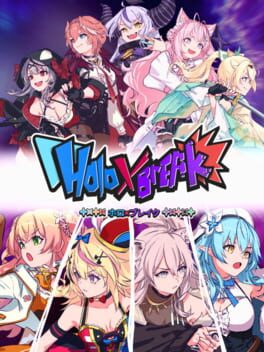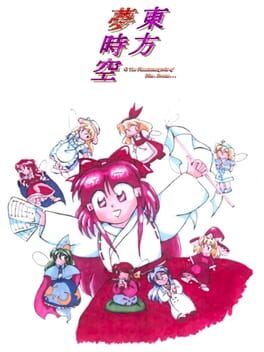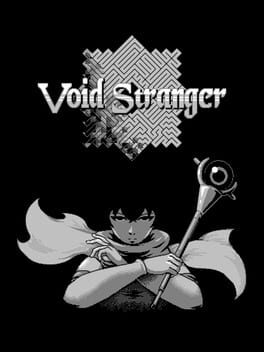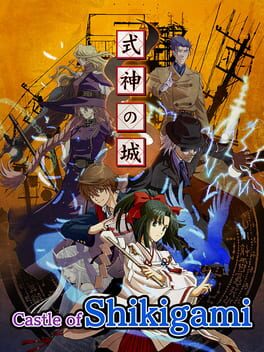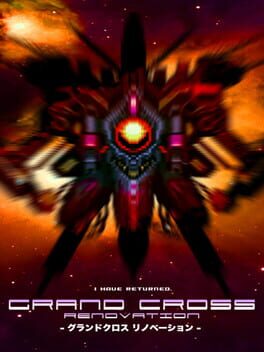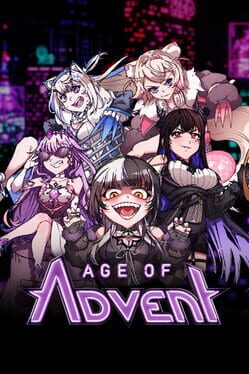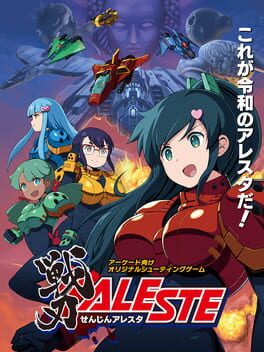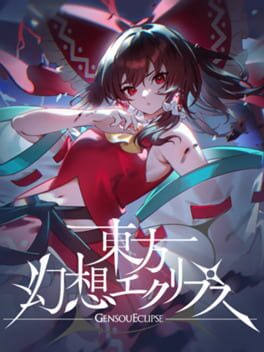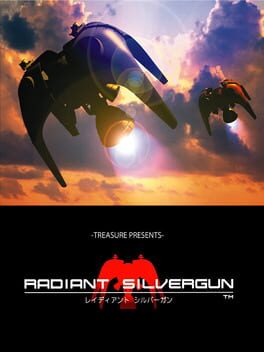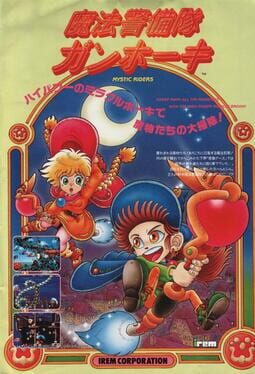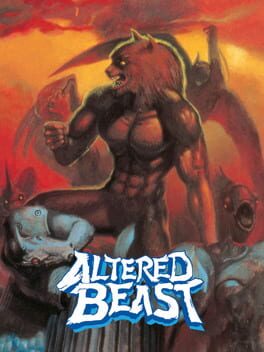LobbyDob
2024
What the fuck kind of beat-em-up game has moba style cooldown abilities and no grab attacks whatsoever?
Holo X Break is the latest game from KayAnimate, of Holocure fame. Just like Holocure, Holobreak has very high presentational quality for a free fangame, perhaps even more so than Holocure. The pixel art throughout the game is beautiful and some of the music really goes hard. There's a bunch of love for the Hololive franchise here with a bunch of nice attention to detail and references that fans will enjoy.
Unfortunately, whereas Holocure was actually really quite good as an actual game (at least for Survivorlike standards), HoloBreak doesn't manage to get the fundamentals of the beat-em-up/belt scroller genre right. The player characters have nothing but a dodge roll, a basic 4-hit auto-combo, a couple of cooldown abilities and a super move that charges up very slowly so don't expect to use it more than once or twice per stage. The dodge roll can't even be used to cancel out of attack recovery animations (which can be over a second for even basic attacks), charge attacks and cooldown abilities can only be charged while stationary, and a lot of characters have no real crowd control options. This leaves the player character feeling clunky and fundamentally weak, incapable of reliably dealing with the later stage enemies and boss fights.
How does Holobreak remedy this? Ideally it would be through having better fundamental game balance or more interesting character movesets, but instead the fundamental weakness of the player character is addressed through ugh... a bunch of tacked on RPG-style mechanics. Levelling, character stats, consumable items, recruitable party member npcs, equipment, equipment upgrades, random equipment drops and probably some other stuff I've forgotten. Although having a good build can make the game more fun (and a LOT easier), none of these mechanics really feel at home in a beat-em-up game. The randomness of item collection also makes your success a lot more RNG-reliant than it reasonably has any right to be.
I don't even think RPG-mechanics in arcadey action games are inherently a bad thing either. Phantom Breaker: Battle Grounds is a similar anime-girl pixel-art beat-em-up game with a lot of RPG progression, but that game is great due to its wealth of interesting character movesets, level design and combo potential.
On the whole, Holo X Break is still ok, especially for a free game - it won't hurt to at least give this game a shot if you're at all interested in hololive, but after Holocure, I can't help but feel a bit disappointed.
Holo X Break is the latest game from KayAnimate, of Holocure fame. Just like Holocure, Holobreak has very high presentational quality for a free fangame, perhaps even more so than Holocure. The pixel art throughout the game is beautiful and some of the music really goes hard. There's a bunch of love for the Hololive franchise here with a bunch of nice attention to detail and references that fans will enjoy.
Unfortunately, whereas Holocure was actually really quite good as an actual game (at least for Survivorlike standards), HoloBreak doesn't manage to get the fundamentals of the beat-em-up/belt scroller genre right. The player characters have nothing but a dodge roll, a basic 4-hit auto-combo, a couple of cooldown abilities and a super move that charges up very slowly so don't expect to use it more than once or twice per stage. The dodge roll can't even be used to cancel out of attack recovery animations (which can be over a second for even basic attacks), charge attacks and cooldown abilities can only be charged while stationary, and a lot of characters have no real crowd control options. This leaves the player character feeling clunky and fundamentally weak, incapable of reliably dealing with the later stage enemies and boss fights.
How does Holobreak remedy this? Ideally it would be through having better fundamental game balance or more interesting character movesets, but instead the fundamental weakness of the player character is addressed through ugh... a bunch of tacked on RPG-style mechanics. Levelling, character stats, consumable items, recruitable party member npcs, equipment, equipment upgrades, random equipment drops and probably some other stuff I've forgotten. Although having a good build can make the game more fun (and a LOT easier), none of these mechanics really feel at home in a beat-em-up game. The randomness of item collection also makes your success a lot more RNG-reliant than it reasonably has any right to be.
I don't even think RPG-mechanics in arcadey action games are inherently a bad thing either. Phantom Breaker: Battle Grounds is a similar anime-girl pixel-art beat-em-up game with a lot of RPG progression, but that game is great due to its wealth of interesting character movesets, level design and combo potential.
On the whole, Holo X Break is still ok, especially for a free game - it won't hurt to at least give this game a shot if you're at all interested in hololive, but after Holocure, I can't help but feel a bit disappointed.
2022
Signalis is a tense, gripping sci-fi survival horror that feels like a return to form for the genre with its focus on resource management and exploration. The game remains engaging through its excellent worldbuilding and trippy storytelling with even trippier visuals that manage to blend low-poly PSX horror and Seinen anime aesthetics surprisingly well.
Although this sounds weird, Signalis heavily reminds me of Zero Ranger, despite these being two games in completely different genres. Both are indie darlings that also happen to be incredibly derivative - so much that they almost feel like some kind of crossover fanfiction at points, but despite this, they execute their central ideas well enough to remain fresh and original.
What's so derivative about Signalis you may ask? Well, most of the gameplay mechanics evoke classic Resident Evil, the thematic storytelling is a mishmash of Silent Hill and NGE, and this game's visual direction thing of regular jump-cuts to large block Kanji (AKSHULLY, it's Hanzi in this case) against monochromatic backgrounds is basically one big long-running Monogatari reference. Somehow these conflicting inspirational elements manage to work, even if it gives the impression of Signalis being less cohesive than it could be otherwise.
I previously mentioned the focus on exploration and resource management, and yeah for the most part it's done well here. A common complaint I'm seeing is about the restrictive six-item inventory limit, but I didn't really have a problem with it in my 9.5 hour playthrough. It may be because I did my first playthrough of Resi 1 with Chris Redfield (bruh) so I'm used to this kind of restriction, but I suspect it might have more to do with the fact that the inventory restriction genuinely doesn't feel as painful here as it does in classic resi games.
For better and for worse, you're never far away from where you need to be to use an item you just found, and most items are one-use before being cleared from your inventory. Additionally, sneaking past enemies is super viable here due to the generally slow enemy attacks and wide corridors, meaning that much of the time I didn't even need to carry a weapon either.
Overall though I liked the restraint that Signalis shows in its gameplay. It's a very pure experience with good gameplay density - not bogged down with any pointless upgrade systems or tacked-on RPG mechanics. Even the first-person walking sim sections felt pretty good at respecting your time.
In true classic survival horror fashion, there are many puzzles in Signalis you must complete in order to progress. These puzzles are generally solid, doing a good job of establishing an internal logic that isn't too obtuse for the player to follow but also just complex enough to feel rewarding to figure out. I especially liked the puzzles which utilise the radio frequency mechanic, which involved a lot of creative applications.
Unfortunately the exploration between these puzzles is quite lacking. The level design is far from the best this genre has to offer. There's little in the way of circular design that expands upon itself to make backtracking satisfying - for the most part you'll be exploring isolated floors of corridors with little else to spice things up. The key hunting can be incredibly transparent too, with there being some times where you just find a key to open a door to find another key with nothing else in between. As a side note, there were also some encounters that would have been better as a unique one-off, such as the "radio battle" against infected Kolibri units. I was really impressed the first time I saw one of these but by the fourth or fifth time the novelty wore off and it felt tedious to fight them, especially with other enemies poking at you simultaneously.
Admittedly I wasn't paying too much attention to the story, so I'm not gonna give a deep dive by any means here, but the vibes of the storytelling were on point. I loved the worldbuilding of this dystopian sci-fi settting built upon a mysterious "bioresonance" technology, the distinction between the different Replika units is great, and I liked the undeniable lesbianism between the main characters. The communication of the finer details of the narrative are obtuse for their own sake (if I was being cynical, one could call it "video-essay bait"), and this kind of storytelling approach via disconnected, wishy-washy lines of poetry usually doesn't do it for me, but like I said, the vibes are on point.
Although this sounds weird, Signalis heavily reminds me of Zero Ranger, despite these being two games in completely different genres. Both are indie darlings that also happen to be incredibly derivative - so much that they almost feel like some kind of crossover fanfiction at points, but despite this, they execute their central ideas well enough to remain fresh and original.
What's so derivative about Signalis you may ask? Well, most of the gameplay mechanics evoke classic Resident Evil, the thematic storytelling is a mishmash of Silent Hill and NGE, and this game's visual direction thing of regular jump-cuts to large block Kanji (AKSHULLY, it's Hanzi in this case) against monochromatic backgrounds is basically one big long-running Monogatari reference. Somehow these conflicting inspirational elements manage to work, even if it gives the impression of Signalis being less cohesive than it could be otherwise.
I previously mentioned the focus on exploration and resource management, and yeah for the most part it's done well here. A common complaint I'm seeing is about the restrictive six-item inventory limit, but I didn't really have a problem with it in my 9.5 hour playthrough. It may be because I did my first playthrough of Resi 1 with Chris Redfield (bruh) so I'm used to this kind of restriction, but I suspect it might have more to do with the fact that the inventory restriction genuinely doesn't feel as painful here as it does in classic resi games.
For better and for worse, you're never far away from where you need to be to use an item you just found, and most items are one-use before being cleared from your inventory. Additionally, sneaking past enemies is super viable here due to the generally slow enemy attacks and wide corridors, meaning that much of the time I didn't even need to carry a weapon either.
Overall though I liked the restraint that Signalis shows in its gameplay. It's a very pure experience with good gameplay density - not bogged down with any pointless upgrade systems or tacked-on RPG mechanics. Even the first-person walking sim sections felt pretty good at respecting your time.
In true classic survival horror fashion, there are many puzzles in Signalis you must complete in order to progress. These puzzles are generally solid, doing a good job of establishing an internal logic that isn't too obtuse for the player to follow but also just complex enough to feel rewarding to figure out. I especially liked the puzzles which utilise the radio frequency mechanic, which involved a lot of creative applications.
Unfortunately the exploration between these puzzles is quite lacking. The level design is far from the best this genre has to offer. There's little in the way of circular design that expands upon itself to make backtracking satisfying - for the most part you'll be exploring isolated floors of corridors with little else to spice things up. The key hunting can be incredibly transparent too, with there being some times where you just find a key to open a door to find another key with nothing else in between. As a side note, there were also some encounters that would have been better as a unique one-off, such as the "radio battle" against infected Kolibri units. I was really impressed the first time I saw one of these but by the fourth or fifth time the novelty wore off and it felt tedious to fight them, especially with other enemies poking at you simultaneously.
Admittedly I wasn't paying too much attention to the story, so I'm not gonna give a deep dive by any means here, but the vibes of the storytelling were on point. I loved the worldbuilding of this dystopian sci-fi settting built upon a mysterious "bioresonance" technology, the distinction between the different Replika units is great, and I liked the undeniable lesbianism between the main characters. The communication of the finer details of the narrative are obtuse for their own sake (if I was being cynical, one could call it "video-essay bait"), and this kind of storytelling approach via disconnected, wishy-washy lines of poetry usually doesn't do it for me, but like I said, the vibes are on point.
The third entry in the touhou series was originally going to be a horizontal shmup funnily enough, but I guess ZUN changed his mind after playing Twinkle Star Sprites and instead made a vs shmup very much in its style. I've come to like this style of shmup quite a lot recently. The snowballing chaos and dynamism of vs shmup gameplay makes it stay fresh where many other shmups naturally become stale. Plagiarised assets aside, PoDD still feels like a unique and fun entry in the prolific Touhou series, also imo even though the first two touhous did still have decent soundtracks, this is where ZUN really started to enter his element in terms of consistently pumping out banger OSTs.
2023
Just finished my first playthough of Void Stranger. I have to admit I wasn't having the best time with most of the playthrough due to not being all too engaged with the story and most gameplay setpieces/gimmicks vastly overstaying their welcome, but in the last hour I saw two things that I haven't ever seen anything even remotely like in a videogame before. Now I have to keep playing and see where this goes.
2002
There's a lot of to like about Castle of Shikigami. The character designs are cool and the (albeit minimal) storytelling is kinda interesting, and will be welcome to anyone who also likes the Touhou Project series' approach of weaving characterisation and dialogue into bullet hell gameplay. The chapter-based stages and tension mechanic that increases both your score and shot power when grazing enemies/bullets are engaging, and were possibly an inspiration for Touhou LoLK's similar design. But damn, as a whole package this game just does not hold up very well.
I'm not sure if it's even "jank" as such, unless you consider a lack of game balance to be a form of jank, but yeah, this game is so disastrously unbalanced that it makes Touhou DDC look like a perfectly-balanced shmup in comparison. Kuga is the only actually good character gameplay-wise, all of the others are varying degrees of terrible and I'm not sure if the last two stages are even doable on a single credit with some of them. Hitboxes are obnoxiously big and bullet visibility is poor at times. Enemy patterns swing between snoozeworthily easy or blatantly undodgeable, untelegraphed bullshit with little middle ground and even less consideration for any kind of difficulty curve (why is the 3-3 boss harder than the 4-3 and 5-3 boss?).
While the soundtrack is... decent, it does NOT feel like a shmup soundtrack, which is even more noticeable when there aren't even separate boss themes, the stage theme just continues to play during bosses which is a big bruh moment.
I acknowledge a lot of my issues with the game balance might just be skill issue, and I might want to try routing this game out, but I know for a fact that Castle of Shikigami is obtuse and lacking, and I'll safely assume that the sequels are significantly better.
I'm not sure if it's even "jank" as such, unless you consider a lack of game balance to be a form of jank, but yeah, this game is so disastrously unbalanced that it makes Touhou DDC look like a perfectly-balanced shmup in comparison. Kuga is the only actually good character gameplay-wise, all of the others are varying degrees of terrible and I'm not sure if the last two stages are even doable on a single credit with some of them. Hitboxes are obnoxiously big and bullet visibility is poor at times. Enemy patterns swing between snoozeworthily easy or blatantly undodgeable, untelegraphed bullshit with little middle ground and even less consideration for any kind of difficulty curve (why is the 3-3 boss harder than the 4-3 and 5-3 boss?).
While the soundtrack is... decent, it does NOT feel like a shmup soundtrack, which is even more noticeable when there aren't even separate boss themes, the stage theme just continues to play during bosses which is a big bruh moment.
I acknowledge a lot of my issues with the game balance might just be skill issue, and I might want to try routing this game out, but I know for a fact that Castle of Shikigami is obtuse and lacking, and I'll safely assume that the sequels are significantly better.
The best games in the shmup genre always manage to make the player feel powerful, even when they're up against overwhelming odds. It's one of the best things about the genre, and is a crucial ingredient to the push-and-pull of game design that the best shmups manage to execute so gracefully. Grand Cross Renovation goes all in on this player empowerment, with the entire ~40 minute game loop being an insane power fantasy of sun blades, explosions and bosses being melted down to scrap metal in seconds. Although Grand Cross lacks the depth and replay value of its betters, the moment-to-moment experience of playing is extremely gratifying. Watching everything on the screen explode in ridiculous ways while trying to process what's actually going on mechanically is a good experience in its own way, and is one I'll definitely be coming back to every so often.
It's not like Grand Cross is all flash and no substance either. There's certainly some thoughtful design decisions and scoring mechanics here. The sun blade is devastatingly powerful, but using it drains your hp. However; being on low hp increases your risk multiplier, giving the game a risky, aggressive scoring playstyle. Some midboss and boss enemies can also be "overkilled", up to 300 extra hits after destruction, which is both risk vs reward and extremely cool conceptually. The manual aiming of the sun blade gives the player 360-degree shot coverage, which is a simple but effective way of bypassing a problem many "vertizontal" 16:9 shmups face, that being the issue of taking to long to move your shots across the screen.
Grand Cross is a solid game, but sadly also has missed potential. I like to compare this game to the Touhou fangame IKUSAAAAAAAN! (7 a's) - both are Treasure-inspired shmups which rely on conveying a power fantasy through over the top presentation. However; IKUSAAAAAAAN! is both even more over the top and has more engaging gameplay in the long term compared to Grand Cross. With some more adjustable difficulty selections and content, Grand Cross likely would have been able to reach the same heights. That said, GCR is still very much worth checking out just for how cathartic your first (and maybe only) hour of playtime is guaranteed to be.
It's not like Grand Cross is all flash and no substance either. There's certainly some thoughtful design decisions and scoring mechanics here. The sun blade is devastatingly powerful, but using it drains your hp. However; being on low hp increases your risk multiplier, giving the game a risky, aggressive scoring playstyle. Some midboss and boss enemies can also be "overkilled", up to 300 extra hits after destruction, which is both risk vs reward and extremely cool conceptually. The manual aiming of the sun blade gives the player 360-degree shot coverage, which is a simple but effective way of bypassing a problem many "vertizontal" 16:9 shmups face, that being the issue of taking to long to move your shots across the screen.
Grand Cross is a solid game, but sadly also has missed potential. I like to compare this game to the Touhou fangame IKUSAAAAAAAN! (7 a's) - both are Treasure-inspired shmups which rely on conveying a power fantasy through over the top presentation. However; IKUSAAAAAAAN! is both even more over the top and has more engaging gameplay in the long term compared to Grand Cross. With some more adjustable difficulty selections and content, Grand Cross likely would have been able to reach the same heights. That said, GCR is still very much worth checking out just for how cathartic your first (and maybe only) hour of playtime is guaranteed to be.
2023
Age of Advent is a collection of 4 minigames based on the characters of the new Hololive EN generation - Advent.
Shiori's Archival Survival is definitely the most interesting of the games here, being a striking attempt to introduce a scoring-based "arcade" gameplay loop into survival horror. I also like the restraint shown in focusing the horror aspect around atmosphere and rising dread instead of cheap jumpscares.
Nerissa's cooking minigame is the most fun to play of the four, the combination of necrodancer-movement and the famous Snake game format makes for a pretty simple, kinda addictive little game. The only problem is that there's no ramping up of challenge over time, the only threat to the player is the possibility of bombs randomly deciding to spawn unreactably right in front of you.
We're aBAU BAU't to Crash is a cute idea - an endless runner kinda game where you have to control two characters at once, but it doesn't really work in practice since you can just intentionally kill off one of the doggos and then only have to focus on one part of the screen with no real punishment. Probably more fun if you play it multiplayer I guess.
And I don't have much to say about Bijou's puzzle minigame. Block puzzle games aren't really my thing and I'll happily admit that I'm terrible at them. It's ok though.
Shiori's Archival Survival is definitely the most interesting of the games here, being a striking attempt to introduce a scoring-based "arcade" gameplay loop into survival horror. I also like the restraint shown in focusing the horror aspect around atmosphere and rising dread instead of cheap jumpscares.
Nerissa's cooking minigame is the most fun to play of the four, the combination of necrodancer-movement and the famous Snake game format makes for a pretty simple, kinda addictive little game. The only problem is that there's no ramping up of challenge over time, the only threat to the player is the possibility of bombs randomly deciding to spawn unreactably right in front of you.
We're aBAU BAU't to Crash is a cute idea - an endless runner kinda game where you have to control two characters at once, but it doesn't really work in practice since you can just intentionally kill off one of the doggos and then only have to focus on one part of the screen with no real punishment. Probably more fun if you play it multiplayer I guess.
And I don't have much to say about Bijou's puzzle minigame. Block puzzle games aren't really my thing and I'll happily admit that I'm terrible at them. It's ok though.
2016
You are a cowboy and you shoot giant robots. Videogames are pretty cool actually.
2021
I 1cc'd this at the mikado game center in Ikebukuro. Senjin Aleste is pretty great if a bit uninspired. The character rotation system makes this a very generous shmup but still challenging enough to be stimulating even on the lower difficulties.
I doubt I'll be playing Gensou Eclipse for very long but it's still pretty good. Definitely way better than Lost Word and although obviously it would have been better for CAVE to make a Touhou game for consoles/arcades, not held back by gacha mechanics, that was never going to happen in the 2020's. Gensou Eclipse's gameplay still manages to scratch the CAVE itch, if even just in bite-sized chunks.
2001
"Reality has come in sight,
What did you see?
What did you hear?
What did you think?
What did you seek?
What did you do?"
Light and dark. Black and white. Left and right. On and off. Yin and Yang. 0 and 1. Almost anything in life can be reduced to a duality of opposites, and Ikaruga understands this not just from its famous polarity mechanic but the almost rhythmic flow of its level designs. Any shmup developer who's been there will tell you the importance of establishing a sense of flow to playing your game, and Ikaruga is the most striking example of this kind of design. Enemies will regularly be making you move to an invisible rhythm when playing Ikaruga, whether it be the starting enemies in stage 1 coming from the top-right/left corners of the screen, or the crushingly difficult "rose of madness" in the first half stage 4. Even the bosses embrace duality, such as the stage 1 boss shifting the polarity of its attacks between phases, the two-faced stage 2 boss which requires different polarities to take out each half, and the final boss' frenetic rush of overlapping bullet curtains.
This rhythm is amplified by the chaining system, which is much more proactive on the part of the player compared to Radiant Silvergun's one-colour restriction. Take out 3 enemies of the same colour in a row, regardless of which colour they are, and you'll add one chain to your current count. Each level and setpiece within is cleverly designed so that you can destroy every single enemy, including even extra enemies while not breaking your chain if you're good enough. Even though I'm not able to get S-ranks in any of the stages yet, pulling off the chains is very satisfying, with the maneuvers looking super cool when you time and position them just right. Ikaruga's chaining system feels more genuinely like building up a huge combo than any other shmup chaining system I've experienced, and gradually unraveling the chaining routes through each of the five stages is like peeling off the layers of an onion, giving the stages a new character and feel each time you get higher max chain counts.
A common criticism of Ikaruga is that the game is too slow-paced and "puzzle-like" for a shmup, especially in the first two stages, and frankly it's a criticism I agreed with for a long time, but this slowness withers away if you try chaining and get a greater feel for the polarity shifting. These slowly-scrolling setpieces become lightning fast, with you optimising frames in your movements even when going for A-ranks, let alone S-ranks. It helps that the ship movement speed in Ikaruga feels significantly faster than Radiant Silvergun's somewhat sluggish movement speed too.
You can't really talk about Ikaruga without bringing up its world-renowned presentational qualities. Although I like to avoid the rambling discourse over whether games are art or not, Ikaruga is definitely a game I'd consider to be oozing with artistic qualities. Speaking of art, this game is also blessed with some of the hardest going official artworks ever made, with a beautiful, grungy early 2000's cyberpunk anime kind of style. There's also the small but fantastic soundtrack by the director Hiroshi Iuchi, which while it doesn't quite reach the orchestral highs of Sakimoto's works for Radiant Silvergun, Iuchi's soundtrack perfectly matches the ebb-and-flows of the stages and bosses here, with a dramatic finish.
Admittedly Ikaruga can be a very difficult game to get into. It lacks the same immediate appeal of its predecessor, lacking the same scale in narrative, number of boss fights or even screen space taken by the game itself. The polarity mechanic is also even stranger than RS' 7-weapon system, with it feeling as though it's actively punishing conventional shmup gameplay patterns at points. Despite these idiosyncrasies of the game, for most of my time as a player of this genre, I've always respected Ikaruga, and as more time passes, I increasingly love it as well.
What did you see?
What did you hear?
What did you think?
What did you seek?
What did you do?"
Light and dark. Black and white. Left and right. On and off. Yin and Yang. 0 and 1. Almost anything in life can be reduced to a duality of opposites, and Ikaruga understands this not just from its famous polarity mechanic but the almost rhythmic flow of its level designs. Any shmup developer who's been there will tell you the importance of establishing a sense of flow to playing your game, and Ikaruga is the most striking example of this kind of design. Enemies will regularly be making you move to an invisible rhythm when playing Ikaruga, whether it be the starting enemies in stage 1 coming from the top-right/left corners of the screen, or the crushingly difficult "rose of madness" in the first half stage 4. Even the bosses embrace duality, such as the stage 1 boss shifting the polarity of its attacks between phases, the two-faced stage 2 boss which requires different polarities to take out each half, and the final boss' frenetic rush of overlapping bullet curtains.
This rhythm is amplified by the chaining system, which is much more proactive on the part of the player compared to Radiant Silvergun's one-colour restriction. Take out 3 enemies of the same colour in a row, regardless of which colour they are, and you'll add one chain to your current count. Each level and setpiece within is cleverly designed so that you can destroy every single enemy, including even extra enemies while not breaking your chain if you're good enough. Even though I'm not able to get S-ranks in any of the stages yet, pulling off the chains is very satisfying, with the maneuvers looking super cool when you time and position them just right. Ikaruga's chaining system feels more genuinely like building up a huge combo than any other shmup chaining system I've experienced, and gradually unraveling the chaining routes through each of the five stages is like peeling off the layers of an onion, giving the stages a new character and feel each time you get higher max chain counts.
A common criticism of Ikaruga is that the game is too slow-paced and "puzzle-like" for a shmup, especially in the first two stages, and frankly it's a criticism I agreed with for a long time, but this slowness withers away if you try chaining and get a greater feel for the polarity shifting. These slowly-scrolling setpieces become lightning fast, with you optimising frames in your movements even when going for A-ranks, let alone S-ranks. It helps that the ship movement speed in Ikaruga feels significantly faster than Radiant Silvergun's somewhat sluggish movement speed too.
You can't really talk about Ikaruga without bringing up its world-renowned presentational qualities. Although I like to avoid the rambling discourse over whether games are art or not, Ikaruga is definitely a game I'd consider to be oozing with artistic qualities. Speaking of art, this game is also blessed with some of the hardest going official artworks ever made, with a beautiful, grungy early 2000's cyberpunk anime kind of style. There's also the small but fantastic soundtrack by the director Hiroshi Iuchi, which while it doesn't quite reach the orchestral highs of Sakimoto's works for Radiant Silvergun, Iuchi's soundtrack perfectly matches the ebb-and-flows of the stages and bosses here, with a dramatic finish.
Admittedly Ikaruga can be a very difficult game to get into. It lacks the same immediate appeal of its predecessor, lacking the same scale in narrative, number of boss fights or even screen space taken by the game itself. The polarity mechanic is also even stranger than RS' 7-weapon system, with it feeling as though it's actively punishing conventional shmup gameplay patterns at points. Despite these idiosyncrasies of the game, for most of my time as a player of this genre, I've always respected Ikaruga, and as more time passes, I increasingly love it as well.
2017
Hollow Knight really came out of nowhere back in 2017, and left its mark on the gaming world in an impactful way that's still felt to this day. The artstyle is beautiful and the world is filled with variety and intricate detail, such as all of the environmental objects you can slice up or even use as pogo platforms for increased movement options with your nail. The boss fights are just as varied and challenging in a way that never comes across as overbearing or annoying. It was also nice to finally have an indie Metroidvania that felt much more 'Vania than it did Metroid, although admittedly with a lot of Dark Souls inspiration as well. Hollow Knight definitely has a ton of content to sink your teeth into, and it's a combination of all of these factors that made me absolutely adore this game from 2017-2020. Some of you probably remember when I had this game in my favourites list on Backloggd.
Since then I have become increasingly disillusioned with Hollow Knight. I still think this is a good, even great game, it executes the vibes and gameplay styles it's going for with a great confidence and even introduces new mechanics that shake up the standard Metroidvania formula such as not having an autofilling-map on the get go, encouraging more specific memorisation of the myriad areas in Hollow Knight.
However, every time I go back to this game on either my PC or Switch, I enjoy it a little bit less each time. Much of this game really is a complete nothing burger, with too many areas that are intentionally sparse for the sake of "atmosphere", or boss fights that don't feel like a unique test of your moveset or skills. This is further exacerbated by the fact that it simply takes way too long to unlock your full moveset in Hollow Knight, which severely restricts the limits to which this game can push its mechanics, especially in the first half. Hollow Knight is a bloated game, and this even makes parts of the main game progression or story feel anticlimatic in subsequent playthroughs.
Since then I have become increasingly disillusioned with Hollow Knight. I still think this is a good, even great game, it executes the vibes and gameplay styles it's going for with a great confidence and even introduces new mechanics that shake up the standard Metroidvania formula such as not having an autofilling-map on the get go, encouraging more specific memorisation of the myriad areas in Hollow Knight.
However, every time I go back to this game on either my PC or Switch, I enjoy it a little bit less each time. Much of this game really is a complete nothing burger, with too many areas that are intentionally sparse for the sake of "atmosphere", or boss fights that don't feel like a unique test of your moveset or skills. This is further exacerbated by the fact that it simply takes way too long to unlock your full moveset in Hollow Knight, which severely restricts the limits to which this game can push its mechanics, especially in the first half. Hollow Knight is a bloated game, and this even makes parts of the main game progression or story feel anticlimatic in subsequent playthroughs.
1998
Shmups are games where you move around the screen and shoot at stuff. Shmups/STGs are often seen as an overly-simple, "disposable" genre among many in the gaming world. A relic of a bygone era where games were confined to "simple" genres, where games were fated to be nothing but "quarter munchers", unlike the "enlightened" AAA Everything-Game Life Simulators of today.
Radiant Silvergun heroically rejects this notion, introducing gameplay mechanics that are inherently and obviously deep, engaging and complex even to complete newcomers to the genre, while still capturing the raw appeal of intense shmup gameplay for those experienced in the genre. Not just that, Radiant Silvergun is a game that asks a lot of the player, perhaps even more than its successor Ikaruga. There are 7 weapons in your arsenal, more than any other shmup I know of. And all of them have their situational advantages and disadvantages that you must become familiar with in order to progress. In order to stand a reasonable chance against this game's many, many bosses, you must level up your A, B and C weapon categories, and to level up your weapons you must chain and go for full boss destructions, and collect secret Merry dogs, because simply put, your score is your experience points.
No particular part of this game is really all that hard in isolation, at least on normal difficulty, but it's the process of putting it all together, chaining through each section just like how Treasure wanted you to, not just destroying but dominating the bosses, utilising and leveling your weapons in perfect harmony, and accounting for every single hazard and niche interaction that might get you killed. If you show that you have what this game asks of you, it's an extremely rewarding and satisfying experience, a feeling that is boosted further by Radiant Silvergun's excellent presentation, the bloodrush "Treasure pacing" I love which just constantly throws new boss fights and setpieces at you every minute, and riveting story with existential themes.
I also wanna shout out Radiant Silvergun's story mode as well. It's such a clever use of the game's weapon levelling mechanic and is an excellent compromise between a "pure" 1cc and carelessly credit feeding through a shmup, which many other shmups suffer from in terms of their popular reception of being "quarter munchers". You must 1cc story mode in order to clear, but you can save your weapon progress and earn extra starting lives between runs, basically gradually rigging the game further and further in your favour that just about any player can win with enough dedication. But here's the kicker - even with those extra level ups and lives, you still have to learn the game, and take the stages and bosses seriously. This is one of the main things that makes non-shmup players more aligned to this game, and RS' story mode is absolutely something every other shmup developer should be looking towards for inspiration.
Radiant Silvergun is a real videogame, shooting at the soul of man with guns of silver.
Radiant Silvergun heroically rejects this notion, introducing gameplay mechanics that are inherently and obviously deep, engaging and complex even to complete newcomers to the genre, while still capturing the raw appeal of intense shmup gameplay for those experienced in the genre. Not just that, Radiant Silvergun is a game that asks a lot of the player, perhaps even more than its successor Ikaruga. There are 7 weapons in your arsenal, more than any other shmup I know of. And all of them have their situational advantages and disadvantages that you must become familiar with in order to progress. In order to stand a reasonable chance against this game's many, many bosses, you must level up your A, B and C weapon categories, and to level up your weapons you must chain and go for full boss destructions, and collect secret Merry dogs, because simply put, your score is your experience points.
No particular part of this game is really all that hard in isolation, at least on normal difficulty, but it's the process of putting it all together, chaining through each section just like how Treasure wanted you to, not just destroying but dominating the bosses, utilising and leveling your weapons in perfect harmony, and accounting for every single hazard and niche interaction that might get you killed. If you show that you have what this game asks of you, it's an extremely rewarding and satisfying experience, a feeling that is boosted further by Radiant Silvergun's excellent presentation, the bloodrush "Treasure pacing" I love which just constantly throws new boss fights and setpieces at you every minute, and riveting story with existential themes.
I also wanna shout out Radiant Silvergun's story mode as well. It's such a clever use of the game's weapon levelling mechanic and is an excellent compromise between a "pure" 1cc and carelessly credit feeding through a shmup, which many other shmups suffer from in terms of their popular reception of being "quarter munchers". You must 1cc story mode in order to clear, but you can save your weapon progress and earn extra starting lives between runs, basically gradually rigging the game further and further in your favour that just about any player can win with enough dedication. But here's the kicker - even with those extra level ups and lives, you still have to learn the game, and take the stages and bosses seriously. This is one of the main things that makes non-shmup players more aligned to this game, and RS' story mode is absolutely something every other shmup developer should be looking towards for inspiration.
Radiant Silvergun is a real videogame, shooting at the soul of man with guns of silver.
1992
We have cotton at home
1988
The most heterosexual game of all time
